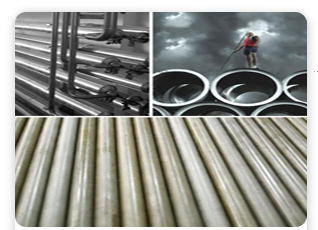Quick Inquiry
Hydraulic systems offer a range of benefits, but recurring leak problems and constant maintenance requirements hinders flourishing businesses from installing them for their use. However, proper hydraulic tube maintenance can help curb most of your concerns, such as leakage, aeration, and oil contamination and assist in hydraulic system uptime. If the problems are attended to cautiously, hydraulic system maintenance is not that complex. You are only required to follow the detailed preventive maintenance program to ensure the health of the seamless hydraulic tubes. Below is a list of ideas about hydraulic seamless tube maintenance, preventative maintenance for the longevity of the tubes, and how to ensure fruitful results of your hydraulic maintenance program.

Ensure the Hydraulic System Does Not Overheat
When working for a prolonged period, hydraulic fluid tends to get hot while constantly pushing through the pumps, the tubing system, and relief valves. If the system’s temperature in the reservoir drops too low, the condensation begins to happen, which can harm the pump, causing cavitation. Contrarily, if the temperature goes too high, sludge deposits can occur due to oxidation varnish. Most hydraulic systems are programmed to run in an optimal range, where mobile hydraulic systems can run to extremely high temperatures. If you are using a water-based hydraulic fluid, ensure the temperature does not drop below 140°F, preventing the water from evaporating from the fluid. Additionally, opt for regular checks of the oil cooler and the reservoir to avoid overheating.
Keep Your System Clean
One of the most vital tasks in maintaining the quality of the seamless hydraulic tubes is to keep your system clean and today at all times. Keeping your tubes clean will not only enhance their durability but also ensure the pace of the system is not slowed down. Try to prevent regular system contamination by dirt, oil contaminants and metal debris from clogging the system. Keep the drain lines, reservoir cover, and breather openings always washed and clean. The hydraulic tubes are majorly used in High-Pressure Hydraulic Lines, Brake lines and Fuel Injection Lines. Contamination of solid particles is common in these spheres and can be smoothly dealt with careful cleaning and regular check-ups.
Maintain a Clean Environment for the Hydraulic Tubes
For high-functioning seamless hydraulic tubes, you have to take critical measures to see to it that the liquid which is poured inside the system does not damage the integrity of the tube. Therefore, store the hydraulic fluid in its designated container in a clean and safe environment. Thoroughly clean the fill cap before pouring in the hydraulic fluid. Keep a close check on the fluid filters or install one if you are yet to purchase. Filter oil can be added to the system via portable filters to achieve the best performance.
Check for Aeration
 ’
Aeration is another issue that hydraulic pipe users face but can be easily solved with careful assessment. All you need to do is inspect the insides of the hydraulic reservoir for any signs of aeration. You can either use a flashlight and check the fill hose for any signs of whirlpools or foaming or call certified professionals (ideally your installers) for the same. Aeration in the reservoir can indicate leakage in the suction line or problematic shaft seals. It can adversely affect the quality and functioning of your hydraulic tubes. Therefore, it is vital to inspect the reservoir regularly.
Check Hose and Tube for Leakage
Even with the best hydraulic tubes, regular use of the system may cause wear and tear of significant parts. Parts such as hydraulic hoses, fittings and tubing are prone to leaks and frays. Please note that any signs of leakage in the hydraulic system are an environmental and safety hazard. The hydraulic fluid runs hot inside the system and can be highly toxic to the environment. Additionally, due to leakage, if the fluid level drops really low, the system will function with reduced efficiency and will get overheated more frequently. As an aware user, it is your responsibility to check for leaks, cracks or loosened hoses and fittings and call for maintenance immediately.
Where to Find Reliable Hydraulic Tube Suppliers?
Are you looking for high-functioning hydraulic systems for your automotive industry? Well, you have reached the right place for Anand Seamless Ltd. is the highly preferred option in the whole of India. Our Seamless Tubes are manufactured and engineered by the Cold Drawn Method (drawn on Mandrel) to provide the ideal dimensional tolerance and smoothness for effective results. We are experts in manufacturing and supplying Seamless Tubes and Pipes, Fin Tubes, Heat Exchanger Tubes and U bend Tubes. Our professionals will assess your requirements carefully and deliver tailored solutions for your industry. You can contact us at inquiry@anandseamless.com or call us at tel:+91-9099996851.
lATEST BLOG |
|
How to Choose Right Grade Carbon Steel Seamless Tubes
Carbon steel seamless tubes are essential componen |
|
Basics of Aluminum Finned Tubes
In the world of heat exchange technology, aluminiu |
|
How to Enhance Mechanical Tubes for Various Applications
Mechanical tubes form the backbone of various indu |
|
Why Are U-Tube Heat Exchangers Undeniably Vital: A Complete Guide
In the landscape of industrial heat exchange syste |
|
Introductory Guide to Economizer Tubes
In the dynamic landscape of industrial operations, |


